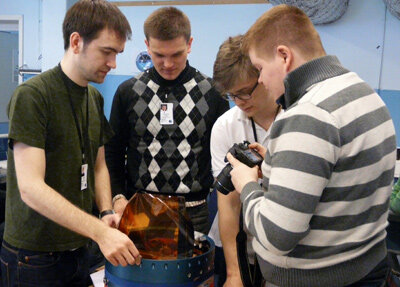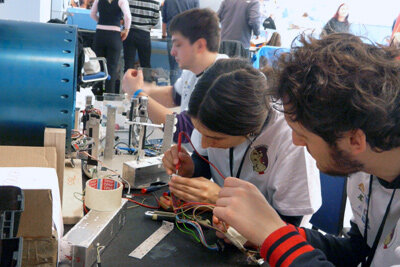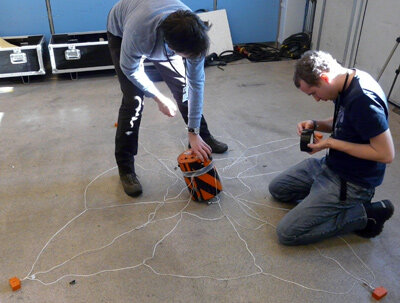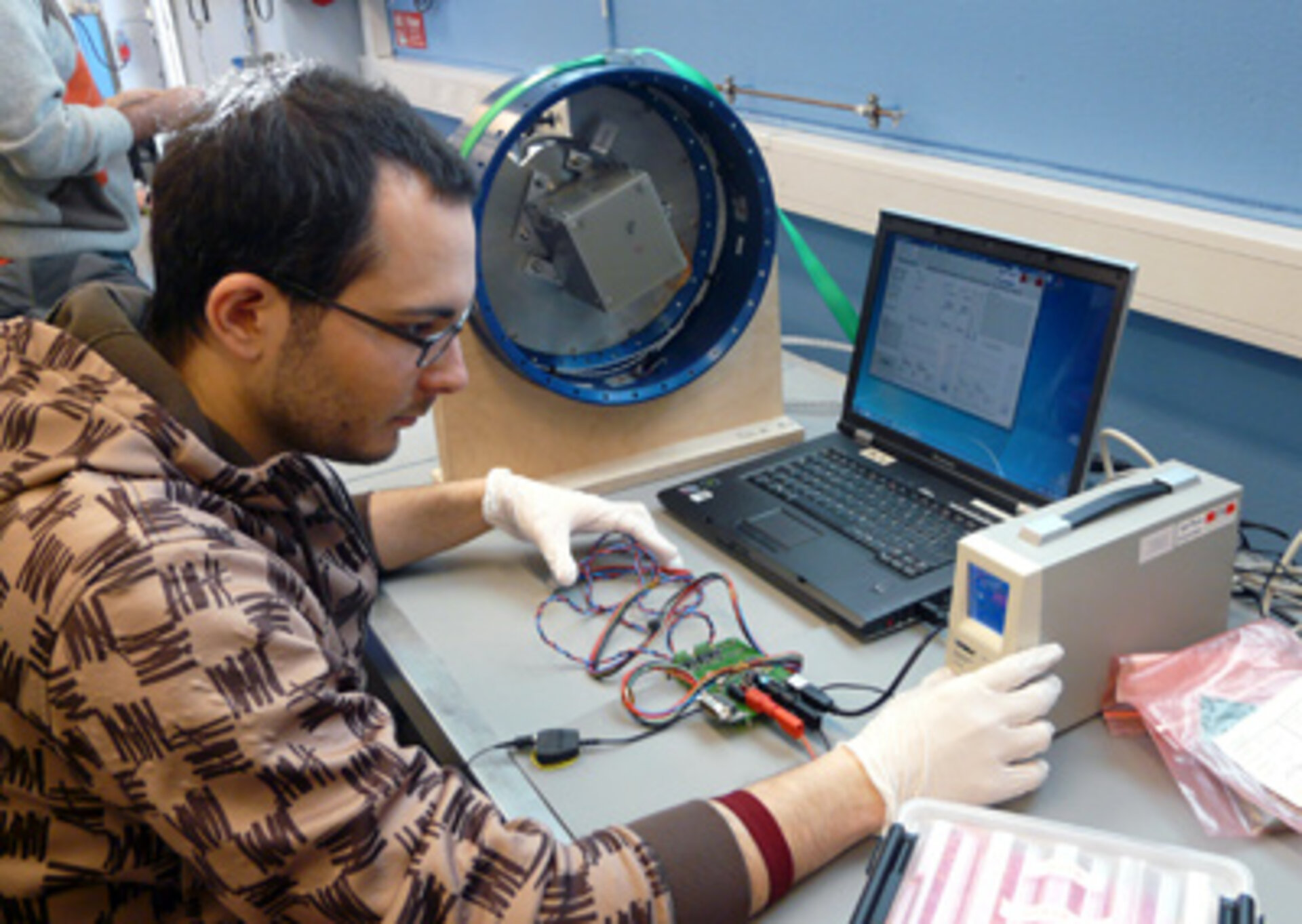REXUS 11 & 12 rocket flights getting ready
Preparations for the next two suborbital flights in the German-Swedish REXUS (Rocket EXperiments for University Students) programme series are well under way. The rockets are scheduled for launch on 20 and 22 March.
Nine teams of European university students have spent the last week at the Esrange Space Centre in Kiruna, northern Sweden, getting ready to fly their experiments to the edge of space. Five teams are supported by the Swedish National Space Board (SNSB) and ESA’s Education Office, the other four by the German Aerospace Center (DLR).

The period leading up to launch includes a busy programme of experiments preparation and testing. After the experiments are checked-out and it is confirmed that they operate nominally on ground, they are connected to the REXUS Service System for a series of bench tests and flight simulations.
These tests are initially carried out on each experiment independently; later on they are extended to the fully assembled payload, simulating all aspects of the flight - countdown, launch and landing. Once the tests are completed, the experiment payloads are mated with their rocket motors, rocket recovery systems and nose cones.
SNBS-ESA sponsored teams

GGES, provided by the École Polytechnique Fédérale de Lausanne in Switzerland, is designed to test a compact new MEMS (Micro-Electro-Mechanical System) sensor that may be used to determine the attitude of a small satellite. The sensor detects the position of the Earth by measuring the rotation of a silicon proof mass due to gravity gradient torque.
RAIN (Rocket deployed Atmospheric probes conducting Independent measurements in Northern Sweden) was provided by KTH Stockholm (Royal Institute of Technology) and by the Stockholm University in Sweden. Its objective is to monitor the density of aerosol particles in the middle atmosphere by ejecting two probes that collect the particles at different altitudes before they parachute back to the ground. Later on the particles will be analysed by an electron-scanning microscope.

REDEMPTION (REmoval of DEbris using Material with Phase Transition - IONospherical tests), developed by the University of Bologna, Italy, comprises three separate experiments which involve the formation of foam in microgravity. Cameras enable the team to see the various phases of the foam’s generation: reaction, expansion and solidification. It is hoped that this may be used in the future as a technique to trap space debris.

Suaineadh (a Scots-Gaelic word meaning ‘twisting’) is a collaboration between the University of Strathclyde, the University of Glasgow (both in the UK) and KTH Royal Institute of Technology in Sweden. It involves the deployment of a space web from a spinning central assembly which is ejected from the REXUS rocket’s nose cone. The web should be stabilised by centrifugal forces generated by an onboard reaction wheel. The operations will be monitored by onboard cameras and sensors.
Telescobe, developed by the Dublin Institute of Technology in Ireland, involves the deployment of a 1.6 m long telescopic, carbon fibre boom. Light from six LEDs at the tip of the boom is collected by a filtered camera measurement system, which enables measuring the boom’s deployment length and stability. An accelerometer mounted at the end of the boom monitors any vibrations. A third camera is used to monitor boom jettison before re-entry.
The Rexus 12 and 11 sounding rockets are scheduled to launch on 20 and 22 March, respectively.
Background

The REXUS/BEXUS (Rocket and Balloon EXperiments for University Students) programme takes place under a bilateral Agency Agreement between DLR Space Administration and the Swedish National Space Board. The Swedish share of the payload is made available to students from other European countries through a collaboration with ESA.
EuroLaunch, a collaboration between the Esrange Space Centre of SSC and the Mobile Rocket Base (MORABA) of DLR, is responsible for the campaign management and operations of the launch vehicles. Experts from ESA, SSC and DLR provide technical support to the student teams throughout the project.




